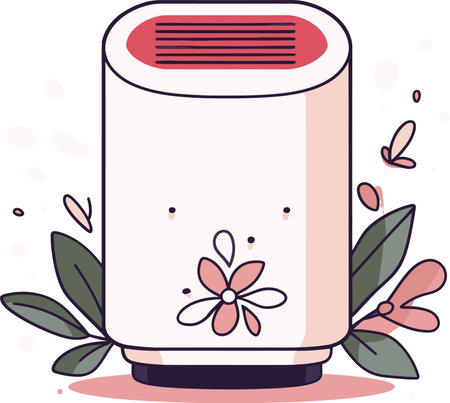Understanding Your Skin’s Natural Cycle
Every morning, your skin faces a new set of challenges, but what happens while you sleep plays a crucial role in how your complexion responds to the day ahead. Overnight, your skin kicks into repair mode—regenerating cells, balancing moisture levels, and recovering from environmental stressors like UV exposure and pollution. This regenerative process means that when you wake up, your skin is at its most vulnerable: its natural barrier is still repairing, and it’s more susceptible to dehydration, irritation, and free radical damage. By understanding this cycle, it’s clear why a thoughtful morning skincare routine isn’t just about looking good—it’s about reinforcing your skin’s defenses when it needs them most. A science-backed approach to morning care sets the tone for healthier, more resilient skin all day long, helping you combat everything from sun exposure on your commute to dry office air or unexpected pollutants in your environment.
2. Cleansing: Clearing the Night Away
Waking up to a fresh start isn’t just about your mindset—it’s also about your skin. Overnight, your face is exposed to sweat, natural oils, dust, and dead skin cell accumulation. Morning cleansing is a crucial step in any effective skincare routine because it eliminates this overnight buildup and prepares your face for the active ingredients that follow. Skipping this step can lead to clogged pores and dullness, making even the best serums or moisturizers less effective.
Why Morning Cleansing Matters
Your skin naturally goes into repair mode while you sleep, but that process leaves behind metabolic waste and excess sebum. If left on the skin, these impurities can contribute to irritation and breakouts, especially when combined with the environmental pollutants you’ll encounter throughout the day. Cleansing in the morning ensures you’re starting with a clean slate—literally.
Common Overnight Skin Buildup
| Source | Description |
|---|---|
| Excess Oil | Produced by sebaceous glands during sleep |
| Sweat | Body temperature rises at night, increasing perspiration |
| Dead Skin Cells | Naturally shed as part of nightly cell turnover |
| Dust & Allergens | Accumulate from bedding and air |
Setting Up for Success
A gentle cleanser tailored to your skin type (gel-based for oily, cream-based for dry) removes these impurities without stripping away essential moisture. This clean base enhances the absorption and effectiveness of your subsequent products like toners, serums, or SPF. Remember: cleansing in the morning isn’t about overdoing it—it’s about creating an optimal environment for healthy skin all day long.

3. Hydration Strategies That Work
Deep hydration is the foundation of any effective morning skincare routine, and American dermatologists consistently emphasize science-backed methods to lock in moisture. The key player here is hyaluronic acid, a naturally occurring molecule in our skin that can hold up to 1,000 times its weight in water. Applying a serum with hyaluronic acid right after cleansing acts like a moisture magnet, instantly plumping the skin and reducing the appearance of fine lines. For maximum benefit, layer your moisturizer on top while your skin is still slightly damp—this helps seal in all that hydration.
It’s also important to steer clear of harsh ingredients that can strip the skin’s protective barrier. Ingredients like sulfates or high concentrations of alcohol are common culprits found in some cleansers and toners; these can leave your face feeling tight and dry. Instead, opt for gentle, pH-balanced cleansers and alcohol-free toners that support your skin’s natural microbiome.
For those living in drier U.S. climates or spending lots of time indoors with air conditioning or heating, consider adding a lightweight facial oil or an occlusive moisturizer as a final step. These products help trap moisture without clogging pores. Ultimately, science shows that a combination of hydrating serums, barrier-protecting moisturizers, and smart ingredient choices will keep your skin dewy and resilient all day long.
4. Barrier Support and Antioxidant Defense
In bustling American cities, your skin faces a daily barrage of environmental stressors—from air pollution to blue light emitted by digital screens. Understanding the science behind barrier support and antioxidant defense is crucial for designing an effective morning skincare routine that truly protects.
Antioxidants: The Urban Shield
Antioxidants, especially Vitamin C, play a pivotal role in neutralizing free radicals generated by pollutants and UV exposure. By doing so, they reduce oxidative stress, which can otherwise accelerate aging and trigger inflammation. Clinical studies show that incorporating antioxidants into your morning regimen helps prevent visible signs of environmental damage while promoting a brighter, more even complexion.
Popular Antioxidants in U.S. Skincare
| Antioxidant | Main Benefit | Common Sources |
|---|---|---|
| Vitamin C (Ascorbic Acid) | Brightening, collagen support, pollution defense | Serums, moisturizers |
| Vitamin E (Tocopherol) | Soothing, works synergistically with Vitamin C | Creams, serums |
| Ferulic Acid | Stabilizes other antioxidants, enhances efficacy | Serum boosters |
Barrier Strength: Locking in Moisture & Blocking Out Aggressors
A healthy skin barrier acts as your first line of defense against city smog, dust particles, and blue light. Moisturizers containing ceramides, hyaluronic acid, and niacinamide help reinforce this barrier. In the American climate—where indoor heating or AC can dry out skin—barrier-supportive moisturizers are non-negotiable for all-day comfort and resilience.
How Moisturizers Protect in Urban Environments
| Key Ingredient | Function |
|---|---|
| Ceramides | Replenish natural lipids, repair barrier function |
| Hyaluronic Acid | Binds moisture to skin, plumps fine lines caused by dryness |
| Niacinamide | Reduces inflammation, strengthens barrier against external aggressors |
The synergy between antioxidants and strong moisturizers not only addresses the immediate challenges posed by urban living but also future-proofs your skin against cumulative damage. For Americans navigating busy city life or spending hours in front of screens, prioritizing these ingredients in your AM routine is both science-backed and practical for maintaining healthy, resilient skin.
5. Smart Sunscreen Application
When it comes to effective morning skincare, smart sunscreen application is non-negotiable. Scientific research confirms that UV exposure is a leading factor in premature skin aging, hyperpigmentation, and even skin cancer. What’s less commonly known is that UV rays can penetrate windows—meaning indoor protection matters just as much as outdoor.
The Science of UV Protection: Indoors & Outdoors
UVA rays, which contribute to aging and long-term skin damage, pass through glass. This makes regular sunscreen use essential for anyone working near windows or driving during the day. American dermatologists recommend daily sunscreen year-round, not just during summer or outdoor activities.
Choosing the Right SPF for American Lifestyles
For most Americans, a broad-spectrum sunscreen with at least SPF 30 provides adequate protection against both UVA and UVB rays. SPF 30 blocks about 97% of UVB rays, striking a balance between strong defense and comfortable wearability for daily routines—whether you’re commuting, walking the dog, or running errands.
How to Layer Sunscreen with Makeup
Layering sunscreen with makeup doesn’t have to be complicated. Apply sunscreen as the final step in your skincare routine before makeup. Let it absorb fully (about 2 minutes), then proceed with primer and foundation. For extra coverage, consider powder or setting sprays containing SPF for touch-ups throughout the day. Remember: using makeup with SPF isn’t enough on its own—proper sunscreen application underneath ensures you get full scientific benefits of protection.
6. Consistency and Habit Building
Building an effective morning skincare routine is not just about choosing the right products—it’s about making it a sustainable daily habit. Consistency is where science meets real-life results, as regular application of key ingredients like sunscreen, antioxidants, and moisturizers has been shown to deliver visible improvements over time. But let’s be real: sticking to any routine can be tough with a busy American lifestyle packed with work, family, and social commitments. Here are some practical hacks rooted in American culture to help you stay on track.
Leverage Technology for Accountability
Americans love their smartphones, and there’s a reason app reminders work so well—they’re always within arm’s reach. Use popular apps like “Habitica,” “Streaks,” or even your phone’s built-in reminders to set daily alerts for your skincare steps. This transforms your routine into a non-negotiable part of your morning checklist, much like grabbing your coffee before heading out the door.
Integrate Skincare Into Existing Rituals
Linking new habits to established routines makes them stick. If you always listen to NPR or a favorite podcast during breakfast, try doing your skincare steps at the same time. Americans thrive on multitasking, so combining rituals helps reduce friction and increase adherence.
Create Visible Cues and Rewards
Place your skincare products next to your toothbrush or coffee maker—visual cues are powerful triggers. And don’t underestimate the motivational power of small rewards; treating yourself to a specialty coffee at the end of a successful week of consistency taps into the American love for little indulgences.
Track Progress and Celebrate Milestones
In true American fashion, tracking progress keeps motivation high. Snap weekly selfies or jot down notes on how your skin feels. Celebrate milestones—like 30 days of consecutive mornings—with something meaningful, whether it’s a new skincare product or a relaxing self-care night.
The science behind habit formation shows that with just a few weeks of consistency, your morning skincare routine will feel automatic—another empowering ritual in your daily American life.


